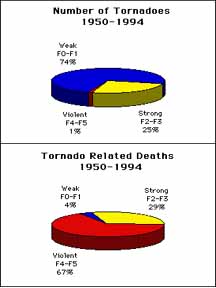Tornadoes and tornado deaths, sorted by
Fujita class.
Click on image for full size
Courtesy of University of Chicago
Tornado Stats
Most of the world's tornadoes happen in the United States. The area where
most of them occur is know as
Tornado Alley. There are
about 750 tornadoes each year in the U.S. and about 100 people each year
are killed by tornadoes. Most tornadoes only last a few minutes and
travel a few miles, but some have been know to last longer and travel
over 100 miles.
Tornadoes are divided into groups according to how strong they are. The
most violent
ones don't happen very often but they cause the most destruction and loss
of life. Scientists can give the public earlier
warnings because of
new technologies that improve
forecasts. In most
cases people can seek shelter before a tornado strikes. This has led to a
decrease in the number of deaths caused by tornadoes. But, since they
can't stop them, the tornadoes will still cause a lot of damage.
You might also be interested in:
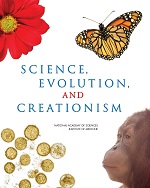
How did life evolve on Earth? The answer to this question can help us understand our past and prepare for our future. Although evolution provides credible and reliable answers, polls show that many people turn away from science, seeking other explanations with which they are more comfortable.
...more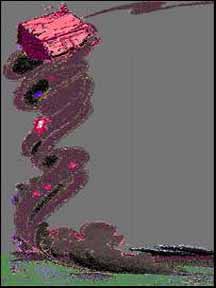
Tornadoes are very dangerous so it's important to know when they may form so you can take shelter. Forecastors at the National Weather Service are always looking for possible storms. Even though nobody
...more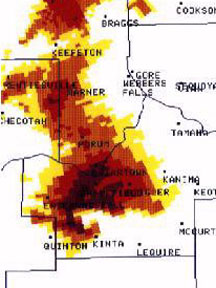
It's hard to forecast tornadoes. They don't last very long and are also very complicated. Scientists don't really know how they form, but they do where they tend to form. Using what they know about the
...more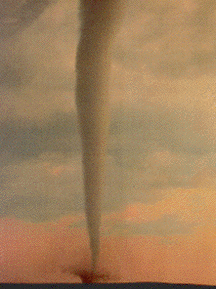
Tornadoes form from severe thunderstorms. They have a very high energy density which means that they affect a small area but are very destructive to that area. They also don't last very long which makes
...more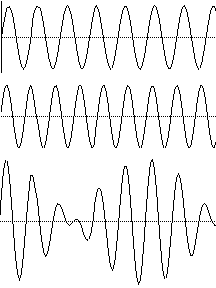
Sound travels in waves. You hear sound because waves hit your ear. Sound waves are similar to ocean waves. They both have a certain frequency. The frequency is measured in hertz, which is one cycle per
...more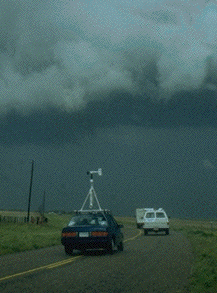
Storm chasers are different than storm spotters. Chasers travel around Tornado Alley looking for severe storms and tornadoes. This area in the Great Plains is the best for chasing because of the frequency
...more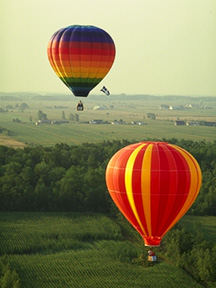
A tornado is the most intense force in nature. That doesn't mean it's the most powerful. In fact, a thunderstorm can be 40,000 times more powerful than a tornado. Then why aren't thunderstorms as dangerous
...more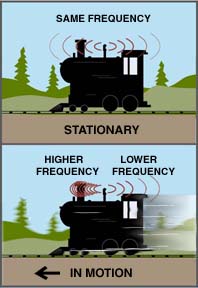
The Doppler effect was named after Christian Doppler, who first came up with the idea in 1842. He learned that sound waves would have a higher frequency if the source was moving toward the observer and
...more


